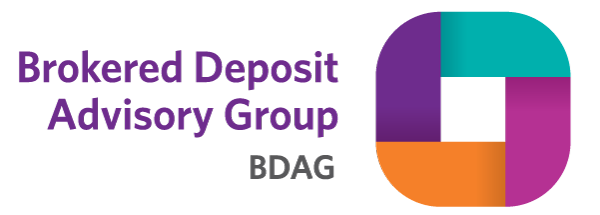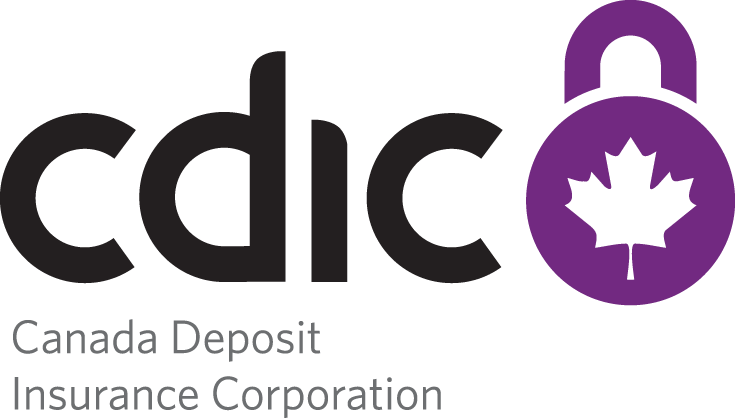Brokered Deposit Advisory Group
The Brokered Deposit Advisory Group (BDAG) was established to assist with the implementation of the new CDIC deposit insurance rules affecting the nominee brokered deposit industry that came into on April 30, 2022.
BDAG facilitates discussion among industry stakeholders affected by these rules and promotes the development of sound industry best practices that help ensure a strong and coordinated implementation of the deposit insurance rules.
BDAG members include representatives from organizations from across the brokered deposit community, including brokerage firms, CDIC member institutions, financial exchange platforms, and data service providers, as well as CDIC.

BDAG has developed key industry best practice documentation to facilitate access by all affected parties to facilitate access by all affected parties.
Unique Client Identifiers (UCI) Industry Best Practices
The Unique Client Identifier (UCI) Industry Best Practices have been developed by industry, in collaboration with CDIC, to support the adoption of a consistent industry approach to the implementation of new CDIC requirements.
The UCI Industry Best Practices provide standards and parameters setting out industry expectations about the UCI design and application and aim to further improve the quality of information being transmitted for nominee brokered deposits.
The standards and parameters complement and support key legislative requirements set out by the Government of Canada. They should be implemented by stakeholders in conjunction with the CDIC Act and the CDIC Co-Owned and Trust Deposit Disclosure By-law (COTDB).
Other Industry Resources
Given new deposit insurance requirements for nominee broker deposits that took effect on April 30, 2022, BDAG has developed resources to support industry’s work to implement the new Framework.
GIC Deposit Re-Registration Industry Best Practices
The GIC Deposit Re-Registration Industry Best Practices support the adoption of a preferred industry approach for updating ownership and other key information for GIC deposits when they are re-registered (i.e., internal re-registration). The Best Practices look to provide standards and parameters to facilitate an automated processes for nominee brokered deposit industry participants to use to re-register GIC deposits, including deposits that are on the records of CDIC member institutions when the new rules take effect (I.e., on April 30, 2022).
GIC Deposit Transfer Interim Approach
The GIC Deposit Transfer Interim Approach supports the adoption of an interim industry approach for updating ownership information for GIC deposits when they are transferred (i.e., external transfers) between nominee brokers. The Interim Approach looks to make the GIC deposit transfer process more efficient by reducing, to the extent possible, information misalignment between the deposit records kept by nominee brokers and CDIC member institutions as it relates to transfers; and help ensure nominee brokers and CDIC member institutions maintain complete and accurate deposit information as required under the CDIC Act and Bylaws. The approach is a stop-gap measure until a permanent automated solution for GIC deposit transfers is developed and implemented across the nominee broker deposit industry.
Pooled Registered Cash Accounts Industry Best Practices
The Pooled Registered Cash Accounts Industry Best Practices help industry stakeholders understand how the deposit insurance requirements for trust deposits set out in the CDIC Act apply to uninvested client funds held in pooled registered cash accounts at CDIC Member Institutions.
Carrying Broker Template Addendums
The Carrying Broker Template Addendums provide sample legal language to support “Carrying Brokers” (as defined by the Investment Industry Regulatory Organization of Canada) in meeting the Introducing and Carrying Broker Deposit Industry Best Practices: Operationalizing the Legal Entity Identifier (LEI) and ensuring the provision of required information from brokers and other financial professionals to CDIC and CDIC Member Institutions. The addendums address the relationship between Carrying Brokers and Introducing Brokers, Portfolio Managers, and CDIC Member Institutions respectively.
Section 8 Best Practices
The Section 8 Best Practices support industry adoption of a standardized approach for the incorporation of required provisions in agreements and arrangements respecting Nominee Broker Deposits, and for the provision of required notifications by CDIC Member Institutions. The Best Practices are supplemented by two sample notifications which may assist Member Institutions in developing their notification processes and procedures.
Deposit Reconciliation Reporting Template and Best Practices (DRR Best Practices)
The Deposit Reconciliation Reporting Template and Best Practices (DRR Best Practices) look to help facilitate standardization of industry processes used to reconcile deposits that are transacted between Nominee Brokers (NBs) and CIDC Member Institutions (MIs) through means outside of the automated processes supported by CANNEX and Fundserv (i.e., processed manually).
The new framework for NBDs set out in the CDIC Act and By-laws introduce several new requirements that involve key data/information to be transmitted from the NB to the MI to ensure that CDIC has access to the information it needs to protect these deposits. The DRR Best Practices allow industry participants to identify situations where required information has not been sent/received and should allow participants to rectify these deficiencies proactively, to minimize instances of non-compliance with the new rules.
